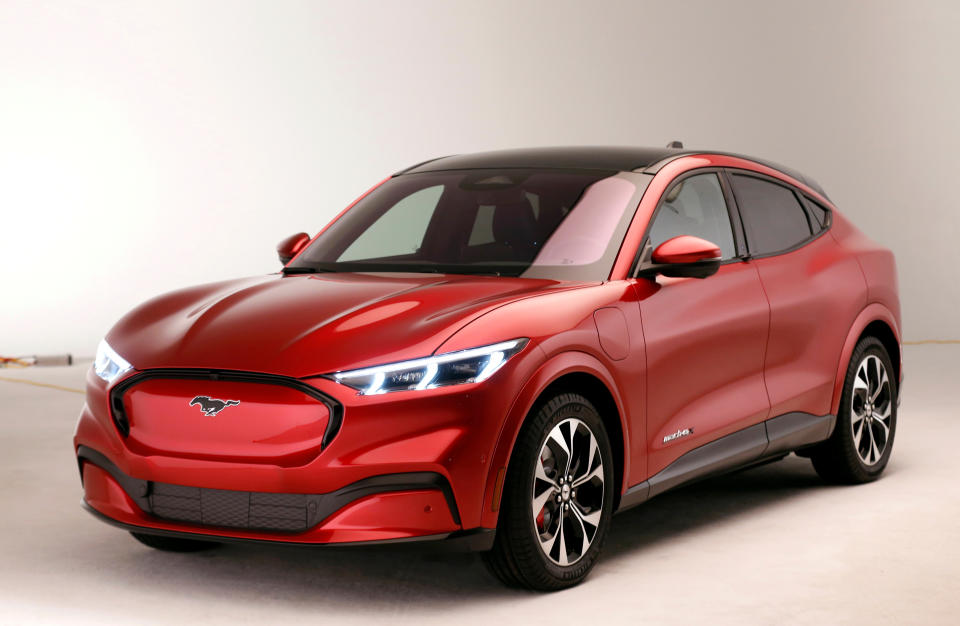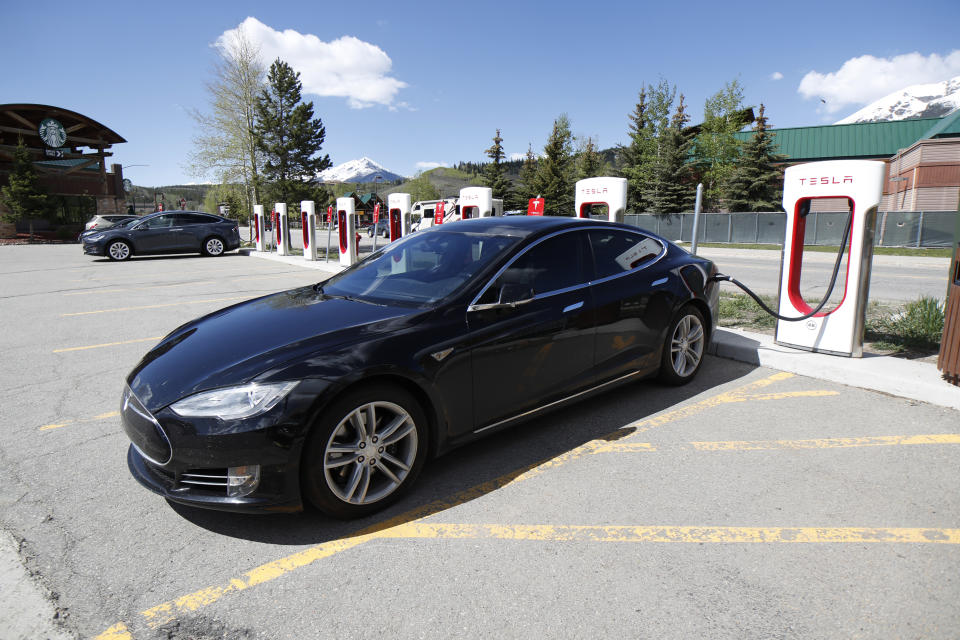What Tesla taught Ford
Ford Motor Co. has been selling electrified vehicles for 15 years. Can you name any of them?
Probably not, because they’ve been bland efficiency plays meant to keep up with Toyota and boost Ford’s corporate fuel-economy rating: The Escape hybrid, The Fusion hybrid, the Focus plug-in and the dearly departed C-Max something-or-other.
Now thundering onto the road, however, is the Mustang Mach-E, an all-electric crossover meant to leverage the muscle car’s rad reputation. Ford (F) won’t be promoting the Mach-E’s MPG-equivalent or environmental cred. What it will promote is the Mach-E’s performance, styling and ability to put a smile on a driver’s face.
For this transformation, Ford (and most other automakers) can thank Tesla and its iconoclastic CEO, Elon Musk. Tesla (TSLA) didn’t invent electric cars. Not even close. What Tesla did is make them exciting. Before Tesla, automakers mainly relied on electrification to boost MPG and lower gas costs for drivers. Musk had a different idea: Harness the massive torque electric power can generate in a car, and use it to delight drivers.
General Motors built an electric car in the 1990s, then killed it. Charging times were too long, range was too short and there was no obvious path to profitability. Then Toyota (TM) introduced the Prius and popularized the hybrid, which uses an electric motor to boost the efficiency of a gas engine, and has no range limitations. American auto executives expressed puzzlement as the homely Prius became an it-car favored by Leo DiCaprio and other celebrities.

Gas hit $4 per gallon in 2008, and most automakers decided they needed to roll out electrified hybrids like the Prius, to help drivers cut fueling costs. Those hybrids were mostly unremarkable variants of existing models such as the Ford Fusion sedan and the GMC Yukon and Dodge Durango SUVs. The added cost of these hybrid powertrains rarely paid for itself in fuel savings, especially as gasoline costs came back down.
A new way of driving
Around the same time, a startup named Tesla began selling the two-seat Roadster, an all-electric sports car that cost around $100,000 and raced from 0 to 60 miles per hour in well under five seconds. Tesla wasn’t trying to save cost-conscious drivers $10 per month in gas. It was trying to wow motorists with explosive performance and convert them to a new way of driving.
The big automakers noticed and started working on their own fully electric cars—but still emphasized efficiency, rather than performance. The Nissan Leaf arrived in 2010, the Ford Focus electric in 2012, the BMW i3 in 2013, the Volkswagen e-Golf in 2014, the Chevy Bolt in 2017. You don’t see many of these on the road. They’re technologically proficient, and fine commuter cars, but they don’t particularly lift the spirits.

Tesla, meanwhile, built a $100,000 electric sedan, the Model S, that was even faster than the Roadster in some configurations. The Model S whomped the Prius as the must-have environmental statement vehicle in California and wealthy enclaves nationwide. A crossover version called the Model X followed. Then in 2017, Tesla introduced the cheaper Model 3, at around $50,000, to get volumes up and reach more drivers. Every Tesla vehicle has been a hit with critics and motorists, even as the company struggles with chronic losses, an exodus of executives and a volatile stock price.
The new Mustang Mach-E, which won’t go on sale until late 2020, is late to the party. Most automakers offer full electrics now, with Audi, BMW, Jaguar, Porsche and others pushing performance models aiming to take turf from Tesla, as the Mach-E will try to do. If costs come down and charging stations proliferate, the market for electrics could expand rapidly, leaving room for many models. The Mach-E could be a hit. But Ford is undoubtedly watching closely to see what Tesla plans next.
Rick Newman is the author of four books, including “Rebounders: How Winners Pivot from Setback to Success.” Follow him on Twitter: @rickjnewman. Confidential tip line: rickjnewman@yahoo.com. Encrypted communication available. Click here to get Rick’s stories by email.
Read more:
Forget electric cars. Motorcycles are better
There’s just one thing wrong with the new Nissan Leaf

